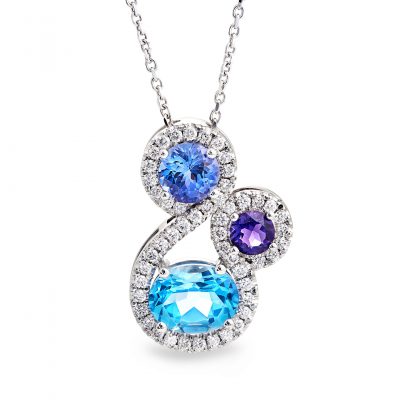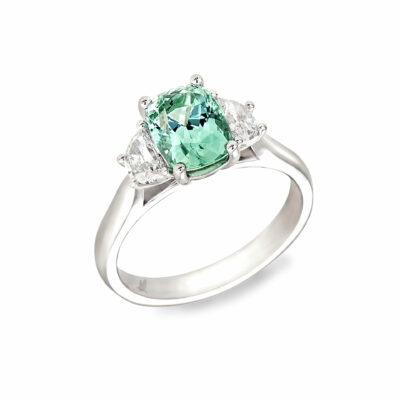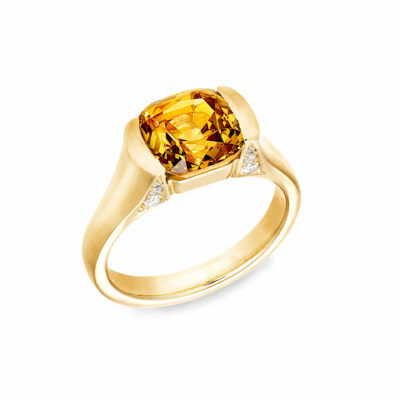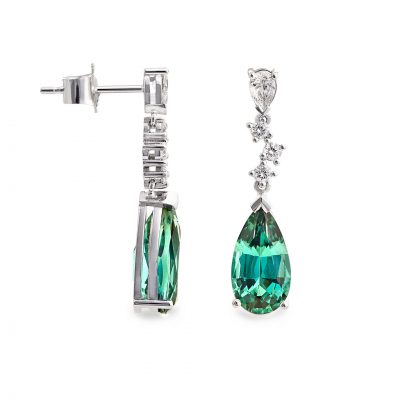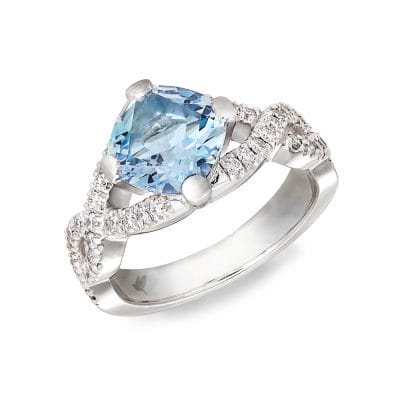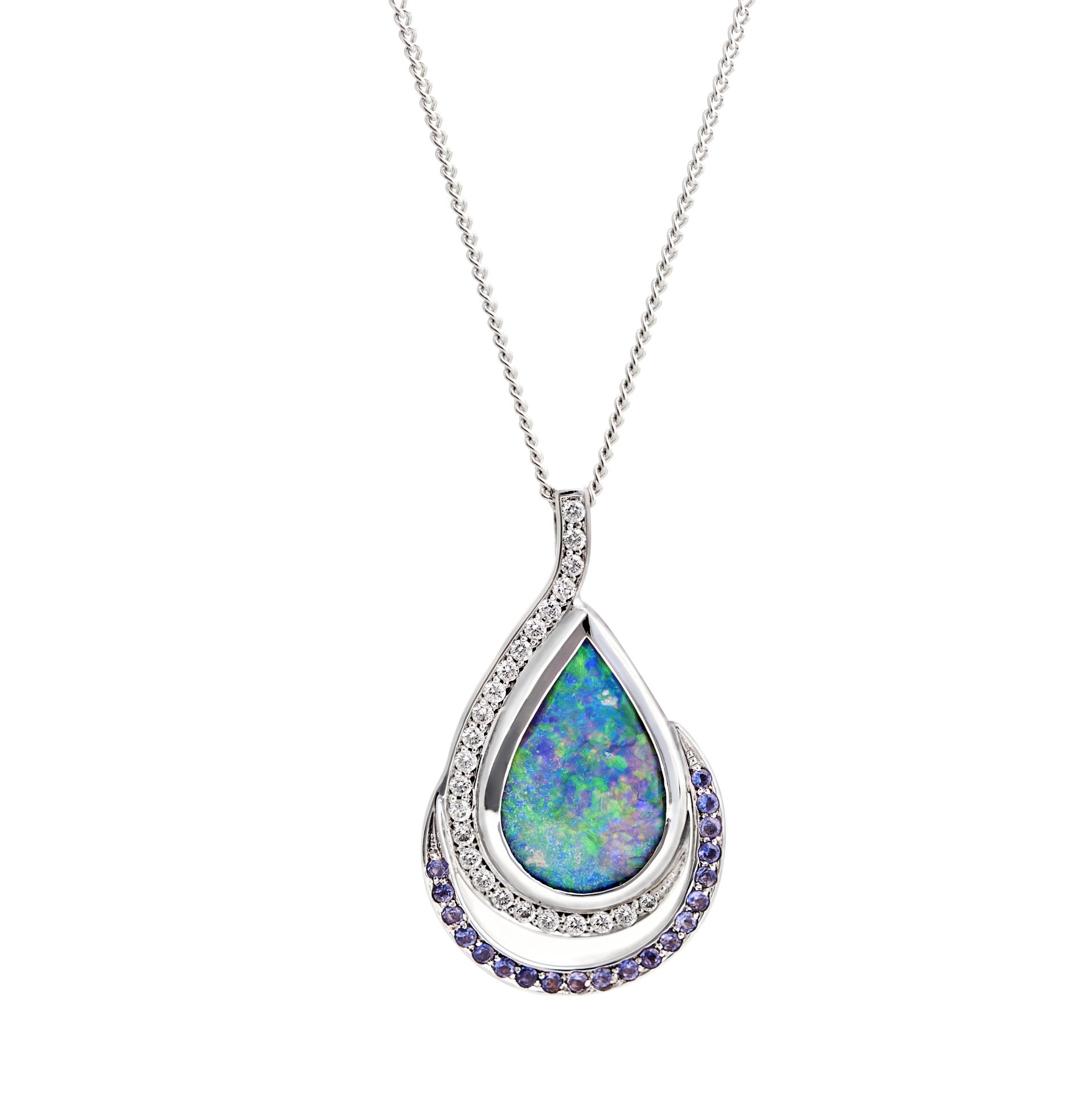
Opal
Origin: Australia primary source, also Ethiopia, Brazil, Mexico, USA
Birthstone: October
Each opal is distinctly original. Opal is formed from a solution of silicon dioxide and water. As water runs down through the earth, it picks up silica from sandstone, and carries this silica-rich solution into cracks and voids , caused by natural faults or decomposing fossils. As the water evaporates, it leaves behind a silica deposit. This cycle repeats over very long periods of time, and eventually opal is formed. Opal also contains water, sometimes as much as 30%, so great care must be taken with extreme changes in temperature.
Play of colour is the most important factor when it comes to Opal. Opals whose ‘play of colour’ flashes in the rare reds are generally more valuable than those with just blue and green. Black Opal is the most valuable variety, simply because of the contrast and intensity afforded by its black body colour. When ‘play of colour’ is present, its value lies in the brilliance, brightness and strength of colours displayed. The patterns of colour also affect value, with large patches of colour priced higher than those with small patches of colour.
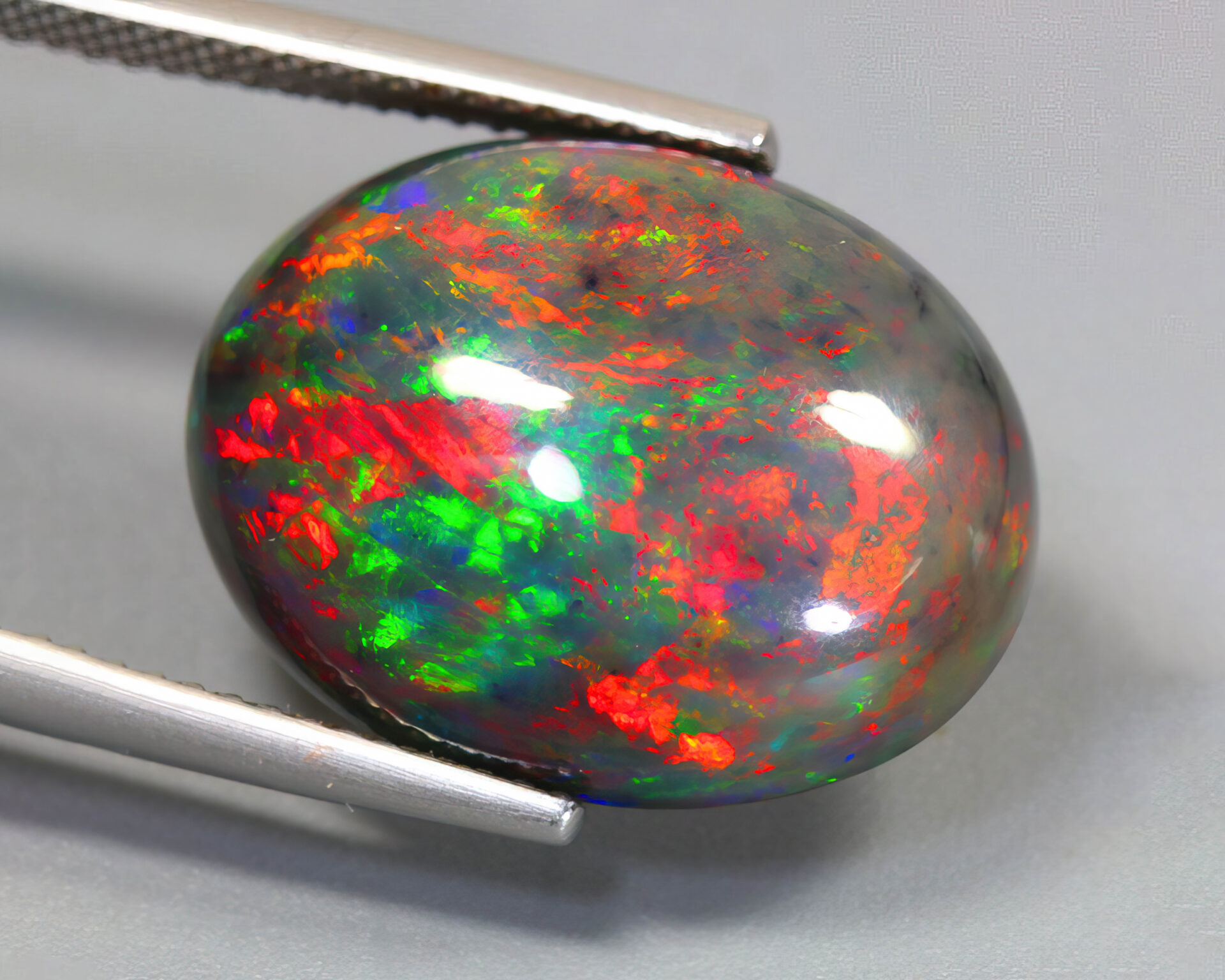
The highly prized Australian opal is one of nature’s true works of art. Recognized as the premiere source, the Lightning Ridge area of New South Wales produces a very finite supply of this phenomenal stone and no two opals are exactly alike. Each masterpiece is a complex palette of colours in blue, green, orange yellow and/or red. As you move the opal around in the light, flashes of colour are revealed in the depths of the gem.
There are two broad classes of opal: precious and common. Black opals are the most valuable precious variety of opal and it is distinguished by its black or dark ‘body tone’ which allows for the opal’s brilliant and vivid play of colour. Of all black opals, those with red tones and patterns will command the highest premium. Not all opals display a good play of colour, and they are referred to as ‘common opal’.
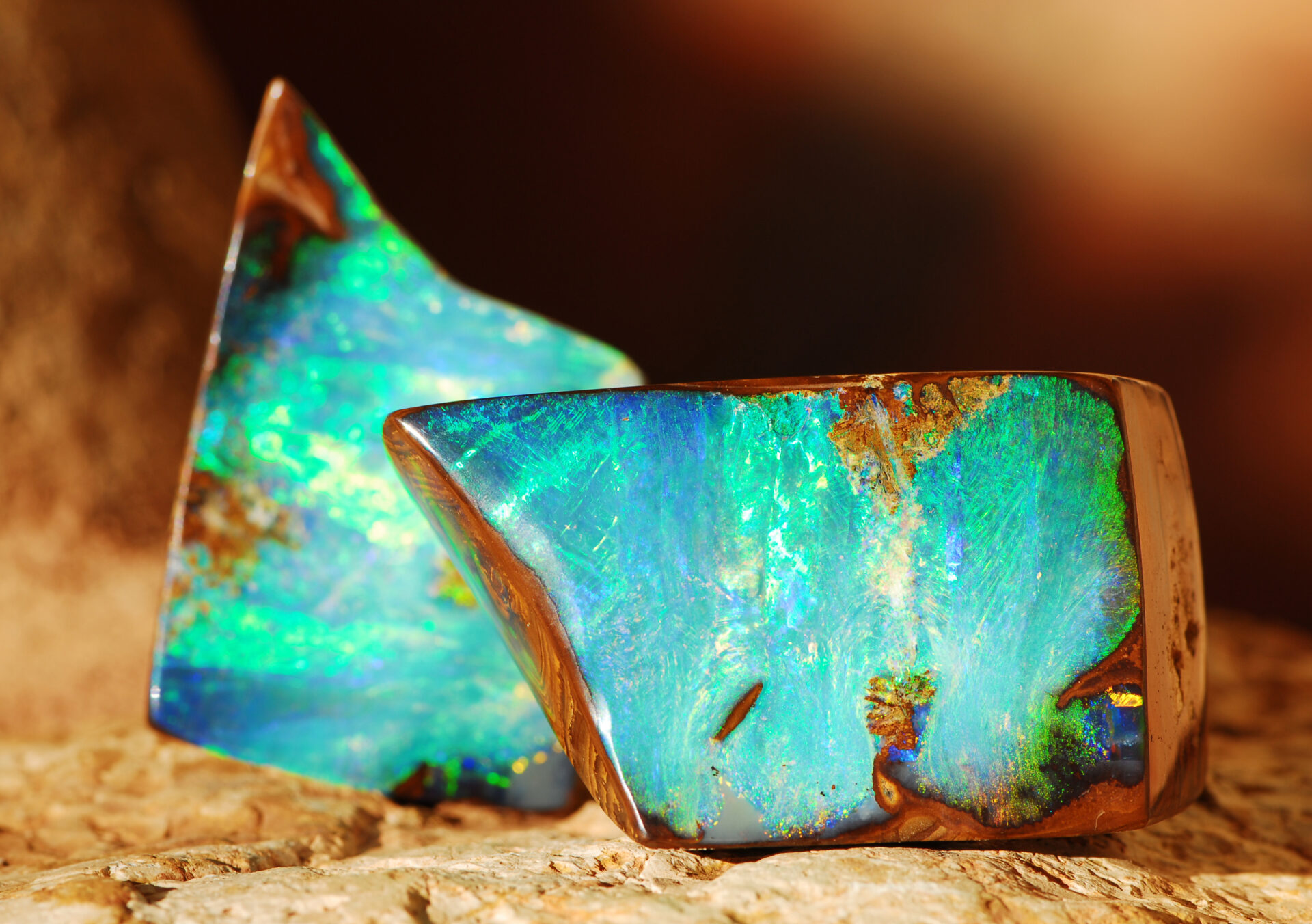
Boulder Opal
Boulder Opal is a type of opal that is still connected to its host rock, which is usually an iron stone or fossilized sandstone. During Boulder Opal formation, silica-rich water seeps into cracks and forms opal, when the silica spheres align perfectly you get precious opal or opal with play-of-colour. The size of the silica determines the flashes of colour that you see. The smaller spheres will give you blue and then you go all the way up the rainbow to the largest sphere, red. Opal actually breaks light instead of reflecting it like most other gemstones. Light entering in the gem wraps around the silica sphere and causes the light to break into spectral colours. It is impossible to remove this opal from its host rock without damaging the opal and typically the seams of opal are so thin it would not be worth the effort. Buying rough boulder is hard, you never know what is on the inside and the risk is huge.
Australian Boulder Opals are the second most valuable type of opal (following Black Opal). Boulder Opals are easily distinguished by their layer of solid brown ironstone left on the back of the stone. The thinness of the bar of colour in boulder opals means that a high cabochoned surface is extremely rare. Boulder opals usually have a flat surface or an undulating surface. Boulder opals are almost always cut in a freeform shape for this reason, to maximise the size of the stone.
Shop Bespoke Jewellery
Special Unique Jewellery for Special People, look for your individual piece now.
For that important, memorable occasion, the ultimate gift is a one-of-a-kind Bespoke piece of Jewellery: a piece with special meaning and uniqueness, symbolising individuality.
You can also visit us in-store for a significant selection of stock for instant and immediate purchase.
